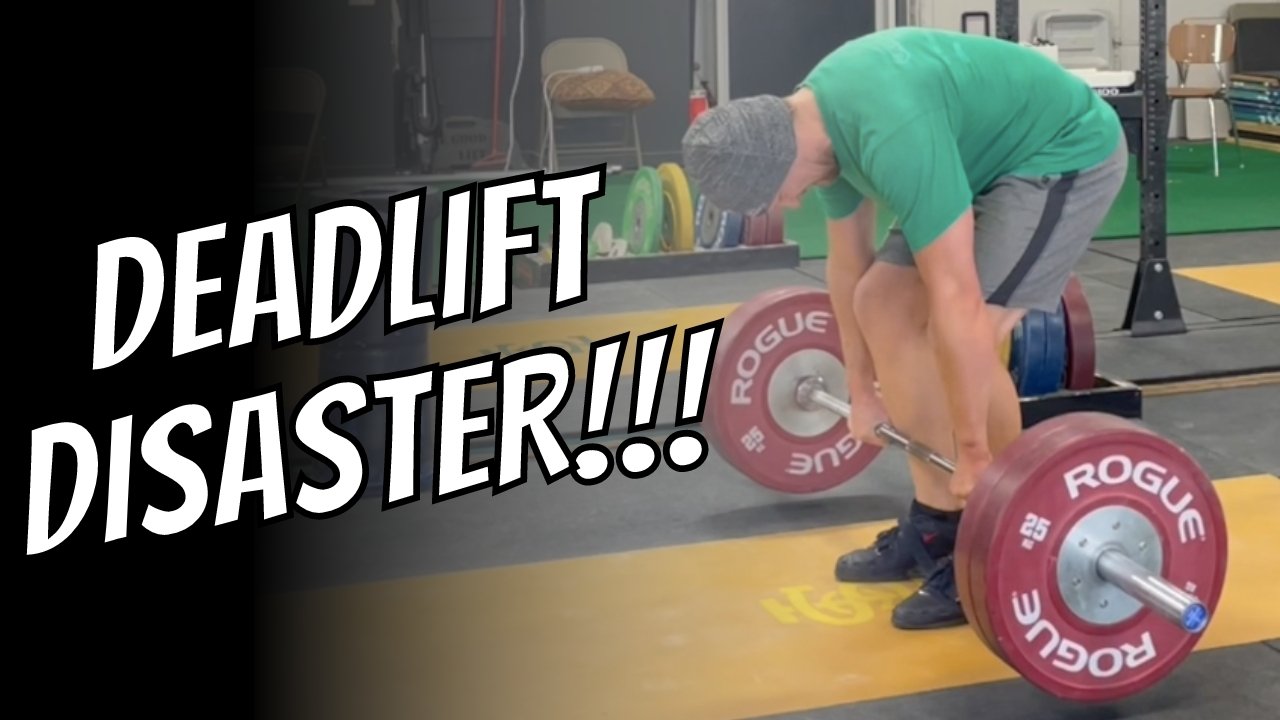WORST Deadlift Ever?! How to Set Your Back: Part 5
/Still Having This Problem?
Do you have a nasty-looking, rounded back when you deadlift? That’s no good, so let’s fix it. Welcome back to our series on how to set your back in flat, rigid extension when you pull from the floor. In the previous four articles, we covered the cues “squeeze your chest up” (Part 1), “push your belly down between your thighs” (Part 2), “wrinkles in your shirt” (Part 3), as well as the anatomically blunt cue, “point your rectum at the wall” (Part 4).
Figure 1: Joy demonstrates a back set rigidly in extension.
If you still struggle to set your back correctly, then the drill presented in this article (the last article in the series) might just help you out. Specifically, you’re going to set your back incorrectly to then help yourself set it correctly. In other words, you’re going to do it wrong to help yourself get it right.
Don’t Jump the Gun
Before we dive into that process, however, be sure to read the previously mentioned articles and try out the relevant cues first. Executing a cue is a simpler and quicker process than performing a drill, so if a cue will do the job, all the better. If cues aren’t working for you, and your back still looks like a camel’s hump, then it’s time to try the following drill (and I’d recommend watching the video below to see this drill in action).
The Setup
Set the barbell on the safeties (Figure 2) inside your squat rack at such a height that the bar sits just below your kneecaps (if you need to start slightly higher, that’s fine as well).
Figure 2
Load a very manageable amount of weight on the bar. You don’t need a lot, but you need enough weight that the bar doesn’t easily move when you start to apply upward tension.
Set up as you would for a deadlift or rack pull, i.e., with the bar positioned over the midfoot, so you’ll need to stand very close to the bar. At this below-the-knee height, you’ll have roughly vertical shins in contact with the bar if you’re set up correctly.
figure 3: his back is in flexion (i.e., rounded).
“Round the Back”
With your hands gripping the bar in their normal deadlift spacing, start with your back in flexion (Figure 3). In other words, start with your back rounded, which is usually an easy position to achieve, especially if you’re struggling with the problem of extending your back anyway. To do this, cue yourself, “round the back.” If it helps, imagine making your back look like a mountain.
Note that the bar is over the middle of your foot, your shins are touching the bar, and here’s the important point for what you’re about to do next: everything from your hips on down does not move. Your butt doesn’t drop, your knees don’t move, your shins don’t move, and the barbell certainly doesn’t move.
“Flatten the Back”
Now, tell yourself to “flatten the back,” “extend the back,” or “push the belly down between the thighs.” It’s easier to achieve a flat back (Figure 4) when the bar is higher up from the floor than a normal deadlift, so you’re in a position where you’ll actually be able to accomplish this.
figure 4: his back is in extension (i.e., flat).
If necessary, you can use the cue “arch the back” or imagine making your back look like a valley, i.e., the opposite of the mountain image you used when rounding the back. An arched back (or “overextension”) is not actually what you want - this is an example of an overcue - but it can be a useful mental picture when trying to achieve a flat back.
Alternate
Perform a set of five reps wherein each rep consists of you starting with a rounded back, moving to a flat back, and then back to a rounded back. In other words, you are alternating between the incorrect position (rounded back) and the correct position (flat back).
By starting each rep with a rounded back, you’re allowing yourself to then simply do the opposite movement to get into the correct position. As stated earlier, you’re doing it wrong to get it right. You learn where you don’t want your back to be, and that helps you get your back into the correct position.
Moving On Down
If you can achieve a flat back for a set of five reps from this initial height - and you’ll need to record yourself on video to check if you are doing so - then you graduate to the next, lower pin setting. Do another five reps, and when you can achieve a flat back at that pin height, keep going lower, repeating the process until you’re pulling from the floor with a straight back.
As always, we hope this helps you get stronger and live better.
(Some links may be affiliate links. As an Amazon Associate, Testify earns from qualifying purchases.)
















